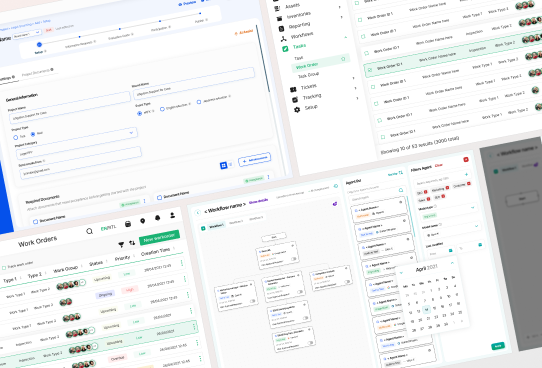Social Impact
<p>Social impact refers to the significant, positive change that addresses pressing social challenges. In the context of sustainable UX design for climate tech, social impact involves creating digital products that not only solve user needs but also contribute to societal well-being. This concept is crucial because it aligns technology development with broader goals of sustainability, equity, and community benefit.</p>
<p>Historically, the tech industry has focused on innovation and profitability. However, with growing awareness of global issues like climate change and social inequality, there is a shift towards designing products that have a positive social impact. This shift is particularly relevant for climate tech companies, aiming to develop solutions that mitigate environmental challenges while benefiting communities.</p>
<h2>Components of Social Impact in Sustainable UX Design</h2>
<p>To create digital products with a strong social impact, it is essential to consider several components:</p>
<h3>User-Centered Design</h3>
<p>User-centered design (UCD) focuses on creating products that meet the actual needs of users. This approach involves thorough user research, iterative testing, and constant feedback loops. For instance, in climate tech, UCD can help design applications that farmers use to monitor crop health, ensuring these tools are accessible and beneficial to the agricultural community.</p>
<h3>Inclusivity</h3>
<p>Inclusive design ensures that products are accessible to all users, regardless of their abilities or backgrounds. This is especially important in creating climate tech solutions that cater to diverse populations. Tools like <a href="https://developer.mozilla.org/en-US/docs/Web/Accessibility" style="color: #2896FF; text-decoration: underline;">Mozilla's accessibility guidelines</a> can provide valuable insights into making products more inclusive.</p>
<h3>Sustainability</h3>
<p>Sustainability in UX design means creating products that minimize environmental impact. This can involve using eco-friendly technologies, optimizing for energy efficiency, and designing for longevity. In climate tech, sustainability might mean developing software that helps reduce carbon footprints or supports renewable energy initiatives.</p>
<h2>Real-World Examples</h2>
<p>There are several inspiring examples of companies making a social impact through sustainable UX design:</p>
<h3>Olio</h3>
<p>Olio is an app designed to reduce food waste by connecting neighbors and local businesses to share surplus food. This app addresses the critical issue of food wastage while fostering community connections, showcasing how technology can drive social impact.</p>
<h3>Too Good To Go</h3>
<p>Too Good To Go is another application that helps reduce food waste by allowing users to buy unsold food from retailers at a discounted rate. This not only minimizes waste but also provides affordable food options for communities, demonstrating the dual social and environmental benefits of thoughtful UX design.</p>
<h2>Challenges and How to Overcome Them</h2>
<p>Creating digital products with a social impact comes with its own set of challenges:</p>
<h3>Measuring Impact</h3>
<p>Quantifying social impact can be difficult. Unlike financial metrics, social benefits are often qualitative and long-term. Companies can overcome this by using frameworks like the <a href="https://sdgs.un.org/goals" style="color: #2896FF; text-decoration: underline;">UN Sustainable Development Goals (SDGs)</a> to set clear, measurable objectives.</p>
<h3>Balancing Profit and Purpose</h3>
<p>Another challenge is balancing profitability with social goals. Companies may struggle to justify investments in socially impactful projects if they don't see immediate financial returns. However, integrating social impact into the core business strategy can lead to long-term benefits, such as brand loyalty and market differentiation.</p>
<h2>Actionable Steps for Companies</h2>
<p>To effectively incorporate social impact into digital product design, companies can take the following steps:</p>
<h3>Engage Stakeholders</h3>
<p>Involve stakeholders, including users, employees, and community members, in the design process. Their insights can ensure that the product meets real-world needs and generates meaningful impact.</p>
<h3>Implement Ethical Design Principles</h3>
<p>Adopt ethical design principles that prioritize user well-being, privacy, and inclusivity. Resources like the <a href="https://www.designcouncil.org.uk/what-we-do/social-value-impact/" style="color: #2896FF; text-decoration: underline;">Design Council's Social Value Impact Framework</a> can provide useful guidelines.</p>
<h3>Invest in Sustainability</h3>
<p>Commit to sustainable practices in all aspects of product development. This includes choosing eco-friendly materials, optimizing for energy efficiency, and designing products that are durable and upgradable.</p>
<p>In conclusion, social impact in sustainable UX design is about creating products that not only solve user problems but also contribute to societal and environmental well-being. By integrating user-centered design, inclusivity, and sustainability into their processes, companies, especially in the climate tech sector, can drive meaningful change. To learn more about integrating social impact into your design strategy, explore resources like the <a href="https://www.socialimpactlab.eu/" style="color: #2896FF; text-decoration: underline;">Social Impact Lab</a>.</p> <p>We’re using the power of design to increase the adoption of climate technologies and innovation. View our work in climate to know more on how we can support your vision. <a href="https://www.whatifdesign.co/climate" style="color:#2896FF; text-decoration:underline;">View our climate projects</a>.</p> <p>Increase user engagement that converts your demos into sales. Optimise your UX strategies with our audits.
<p>Fill out the <a href="https://tally.so/r/n97pxQ" style="color:#2896FF; text-decoration:underline;">UX Audit form</a> to get started. Ready to discuss your needs? <a href="https://cal.com/akhilak/what-if-design?duration=25" style="color:#2896FF; text-decoration:underline;">Book a consultation call</a> with us today.</p></p>

Let's scale your impact with great design.
Free consultation, no sales pitch
Thank you! Your submission has been received!
Enter you email correctly!
Let’s talk
Nothing great is built alone.
Let’s connect about your vision, our work and how we can collaborate.
Get in touch
© 2025 What if Design
Stripe climate partner

